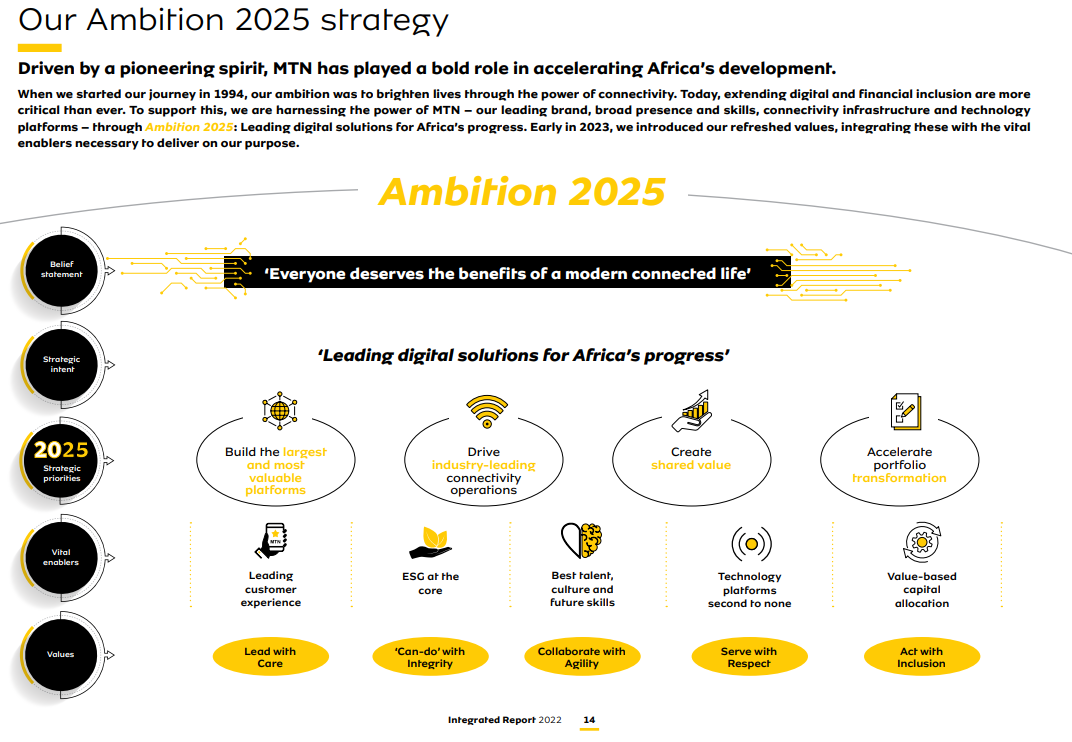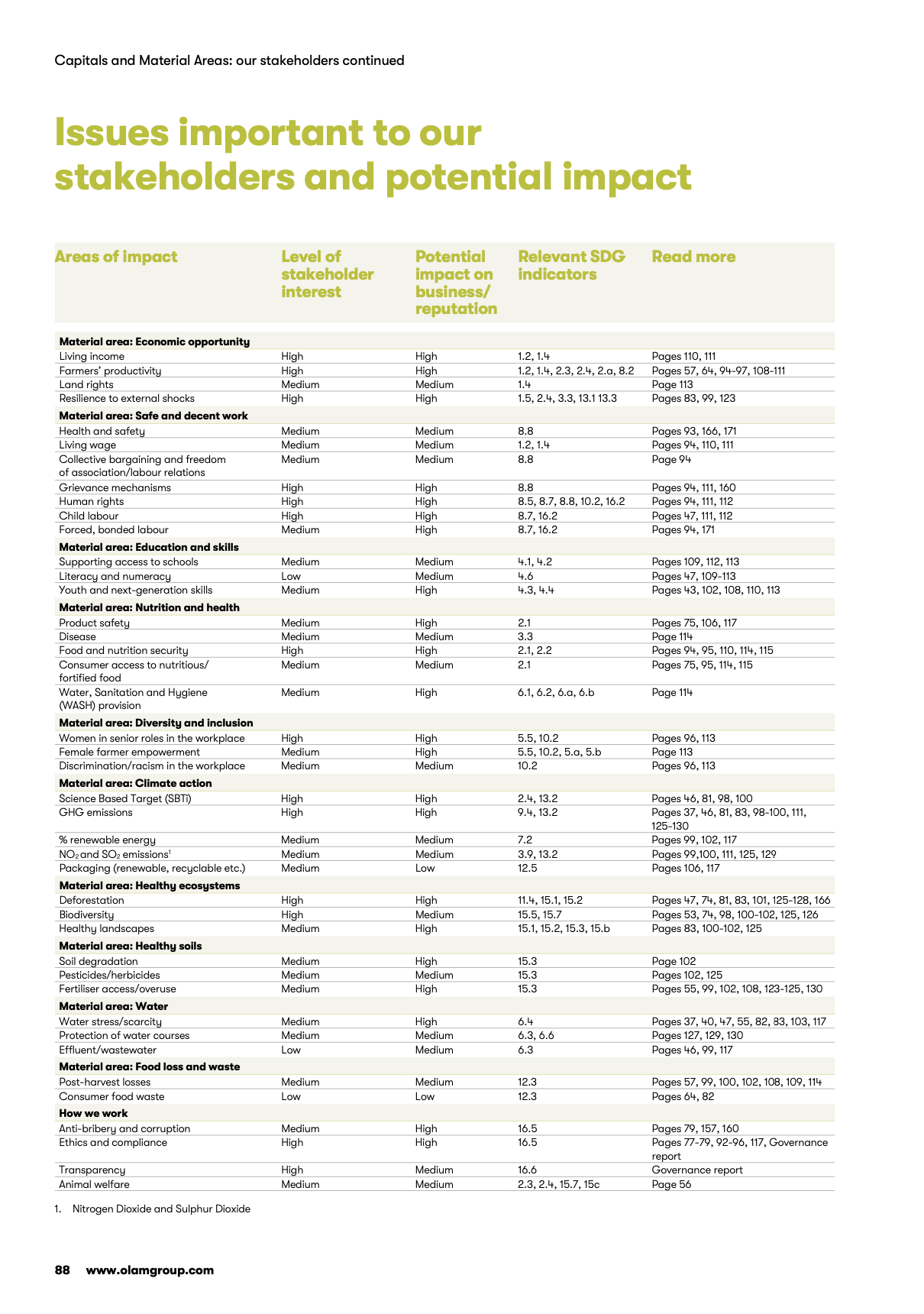A strategy is a plan for growth, transformation, or moving a business closer to achieving long-term goals, and strategic objectives are the focus areas and priorities to achieve the strategy.
Examples of strategic objectives include:
- Market position: growing the share of current and new markets;
- Innovation: creating new products and services, developing new skills and expertise;
- Productivity: producing more with less of any given input (financial capital, time, energy, for example);
- Profitability: generating stronger financial results;
- Human resources: selecting and developing qualified employees;
- Social, environmental, or development impact: products, services, or business activities that create jobs, improve societal well-being or conserve or preserve natural resources.
Companies can use key performance indicators (KPIs) or metrics to measure the company strategy’s effectiveness and evaluate performance.
A key performance indicator (KPI) is a measure, a quantifiable indicator of performance and progress in relation to a specified goal. The Accounting Standards Board defines key performance indicators as “factors by reference to which the development, performance or position of the business of the entity can be measured effectively. They are quantified measurements that reflect the critical success factors of an entity and disclose progress towards achieving a particular objective or objectives.”
Besides measuring performance, KPIs provide insight into what is managed and measured and the quality of management and decision-making.
KPIs should be specific enough to reflect the company strategy while enabling a credible analysis of company performance on both a stand-alone and a comparative basis. KPIs are:
- Measurable. Qualitative goals are important, but KPIs should generally be measurable;
- Comparable. Generally accepted KPIs for an industry or activity may be more credible for investors and other stakeholders;
- Consistent. Your strategy will likely evolve, but the KPIs should remain as consistent as possible (especially concerning methodology) to show trends and maintain credibility and comparability;
- Definitions and assumptions. The assumptions behind the KPIs and their measurement must be clear for credibility. This is especially true if they are new, or have been changed or adjusted;
- Incorporating context. KPIs are especially useful for decision-making by providing context for them. KPIs are generally formulated as absolute values. The following are some suggestions for adding context to environmental and social KPIs:
- Efficiency: Contextualize performance on strategic goals as a ratio of financial results (revenue, profit) or operational results (number of units produced, sold);
- Targets: Present KPIs in the context of targets such as percent of completion or reduction target;
- Peers: Compare performance with industry peers;
- Time: Compare performance year over year and analyze it through a rate of increase (or decrease).
Consider the following when developing KPIs:
- What information is in the company’s management dashboard?
- What information does the board receive to oversee strategy implementation and progress toward objectives?
For more guidance on KPIs, see the Performance Section of the Toolkit. See also IFC’s ESG Performance Indicators for Capital Markets in the Performance Section of the Toolkit.
Targets are the quantifiable benchmarks the company needs to reach to meet its strategic objectives.
Companies can translate strategic objectives into specific and measurable targets or goals using the SMART goal approach:
- Specific: Target a specific area for improvement;
- Measurable: Quantify a progress indicator;
- Assignable: Specify who is responsible;
- Realistic: State the results you can achieve realistically, given the available resources;
- Time-related: Specify when the result can be achieved.
Why Disclose Strategic Objectives and KPIs and Targets?
Strategic objectives help investors and other stakeholders understand where the company is heading, how it plans to get there, and by when. It also helps employees understand their roles in delivering the company’s strategy. Targets and KPIs are important for accountability and allow investors and other stakeholders to assess strategy implementation and progress against strategic objectives.
Recommended Disclosures
Strategic Objectives
Describe the objectives that are most relevant for realizing your strategy. Strategic objectives can be broken down into primary objectives, which often include profitability, market position or innovation, and enabling objectives, which are necessary to achieve the primary objectives. For example, a microfinance institution may have access to finance and profitability as its primary strategic objectives, supported by enabling strategic objectives around social impact and human resources.
The company’s annual report should indicate how the company integrates sustainability opportunities and risks into its strategic objectives. Sustainability issues can constitute major opportunities and, depending on the company’s strategy and business model, can become primary strategic objectives.
KPIs and Targets
Your report should introduce financial and sustainability targets and KPIs with links to the high-level priorities and long-term strategy.
- International good practice suggests translating strategic objectives into specific and measurable targets or goals;
- Companies can use KPIs to evaluate performance and provide accountability to investors and stakeholders.
Learn more about Metrics and Targets for Sustainability Performance.
Disclosing Internal KPIs
You can achieve the greatest transparency and accountability by disclosing the same KPIs that your company uses internally for strategic management, board oversight, and executive performance assessment and compensation.
Integrating Sustainability
Your annual report should explain how the company integrates sustainability-related opportunities and risks into its strategic objectives. This may include sustainability objectives, which in some cases are linked to other financial or nonfinancial objectives.
Upcoming Standards IFRS Draft Standard S1 on General Requirement for Disclosure of Sustainability-Related Financial Information includes disclosure on metrics and targets as one of the four pillars for sustainability disclosure (governance, strategy, risk management, and metrics and targets).
-
ISSB IFRS S1 General Requirements For Disclosure Of Sustainability-related Financial Information
Metrics and targets
45 The objective of sustainability-related financial disclosures on metrics and targets is to enable users of general purpose financial reports to understand an entity’s performance in relation to its sustainability-related risks and opportunities, including progress towards any targets the entity has set, and any targets it is required to meet by law or regulation.
46 An entity shall disclose, for each sustainability-related risk and opportunity that could reasonably be expected to affect the entity’s prospects:
(a) metrics required by an applicable IFRS Sustainability Disclosure Standard; and
(b) metrics the entity uses to measure and monitor:
(i) that sustainability-related risk or opportunity; and
(ii) its performance in relation to that sustainability-related risk or opportunity, including progress towards any targets the entity has set, and any targets it is required to meet by law or regulation.
47 In the absence of an IFRS Sustainability Disclosure Standard that specifically applies to a sustainability-related risk or opportunity, an entity shall apply paragraphs 57–58 to identify applicable metrics.
48 Metrics disclosed by an entity applying paragraphs 45–46 shall include metrics associated with particular business models, activities or other common features that characterise participation in an industry.
49 If an entity discloses a metric taken from a source other than IFRS Sustainability Disclosure Standards, the entity shall identify the source and the metric taken.
50 If a metric has been developed by an entity, the entity shall disclose information about:
(a) how the metric is defined, including whether it is derived by adjusting a metric taken from a source other than IFRS Sustainability Disclosure Standards and, if so, which source and how the metric disclosed by the entity differs from the metric specified in that source;
(b) whether the metric is an absolute measure, a measure expressed in relation to another metric or a qualitative measure (such as a red, amber, green—or RAG—status);
(c) whether the metric is validated by a third party and, if so, which party; and
(d) the method used to calculate the metric and the inputs to the calculation, including the limitations of the method used and the significant assumptions made.
51 An entity shall disclose information about the targets it has set to monitor progress towards achieving its strategic goals, and any targets it is required to meet by law or regulation. For each target, the entity shall disclose:
(a) the metric used to set the target and to monitor progress towards reaching the target;
(b) the specific quantitative or qualitative target the entity has set or is required to meet;
(c) the period over which the target applies;
(d) the base period from which progress is measured;
(e) any milestones and interim targets;
(f) performance against each target and an analysis of trends or changes in the entity’s performance; and
(g) any revisions to the target and an explanation for those revisions.
52 The definition and calculation of metrics, including metrics used to set the entity’s targets and monitor progress towards reaching them, shall be consistent over time. If a metric is redefined or replaced, an entity shall apply paragraph B52.
53 An entity shall label and define metrics and targets using meaningful, clear and precise names and descriptions.
Source: ISSB IFRS S1 General Requirements for Disclosure of Sustainability-Related Financial Information
-
European Sustainability Reporting Standards: ESRS 2 General Disclosures (Excerpt)
5. Metrics and targets
70. This chapter sets out Minimum Disclosure Requirements that shall be included when the undertaking discloses information on its metrics and targets related to each material sustainability matter. They shall be applied together with the Disclosure Requirements, including Application Requirements, provided in the relevant topical ESRS. They shall also be applied when the undertaking prepares entity-specific disclosures.
71. The corresponding disclosures shall be located alongside disclosures prescribed by the topical ESRS.
72. If the undertaking cannot disclose the information on targets required under the relevant topical ESRS, because it has not set targets with reference to the specific sustainability matter concerned, it shall disclose this to be the case, and provide reasons for not having adopted targets. The undertaking may disclose a timeframe in which it aims to adopt them.
Source: ESRS 2 General Disclosures.



